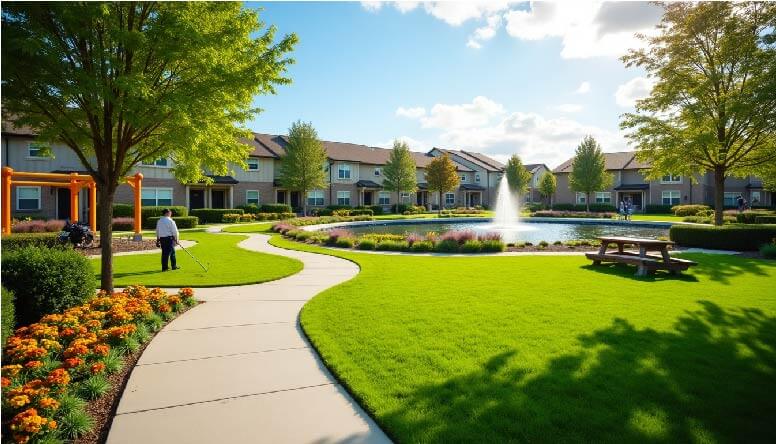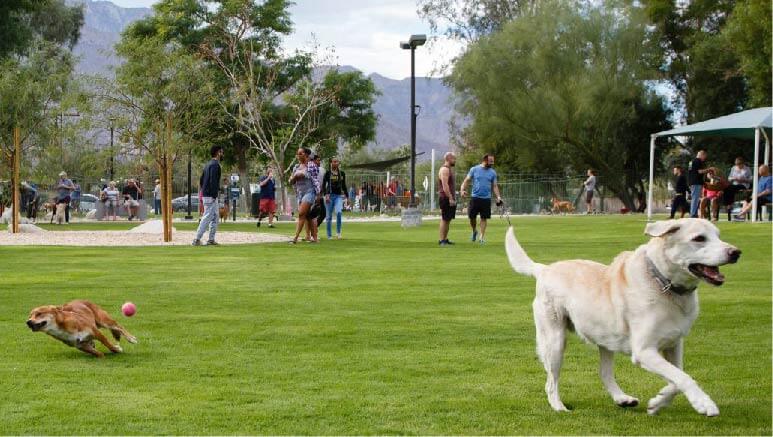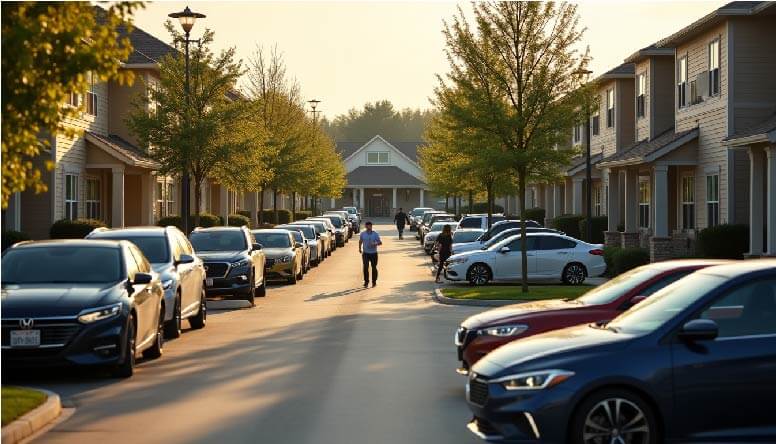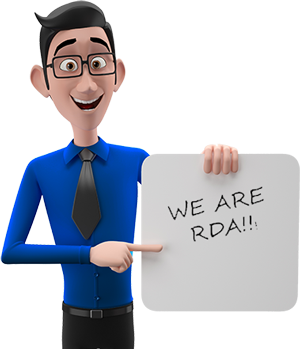How to Manage HOA Common Area Maintenance Efficiently
HOA common area maintenance is a crucial aspect of managing residential communities effectively. It involves the upkeep of shared spaces and facilities that all homeowners use and benefit from. Proper maintenance not only enhances the quality of life for residents but also helps protect property values and reduce potential liability issues.
This article will explore efficient strategies for managing HOA common area maintenance. It will cover assessing maintenance needs, streamlining workflows, and improving preventive measures. Additionally, it will discuss optimizing vendor relationships, financial planning for maintenance costs, and engaging homeowners in maintenance efforts. These insights aim to help HOA boards and managers fulfill their responsibilities more effectively.
Assessing the Scope of Common Area Maintenance
Evaluating the scope of HOA common area maintenance is a crucial step in ensuring the efficient management of a residential community. This process involves identifying key maintenance areas and assessing current practices to develop a comprehensive maintenance strategy.
Identifying Key Maintenance Areas
To effectively manage HOA common area maintenance, it’s essential to identify the specific areas that require attention. These areas typically include:
- Exterior spaces: This encompasses the foundation, walls, paint, doors, windows, roofs, gutters, storm drains, patios, decks, and driveways.
- Interior areas: Common interior spaces may include walls, flooring, roofs (for leaks), screens, and vents (including attics).
- Utilities: Electrical lines, water lines, phone lines, gas lines, air conditioners, heaters, furnaces, and sewage systems all fall under this category.
- Common areas: These spaces often include roads and asphalt, sidewalks, landscaping (tree trimming, irrigation systems), fences, security cameras, vehicle entry gates, parking lots, and trash collection areas.
By clearly defining these maintenance areas, HOAs can create a comprehensive checklist to ensure no aspect of common area upkeep is overlooked. This approach helps in prioritizing maintenance tasks and allocating resources effectively.
Evaluating Current Maintenance Practices
Once key maintenance areas have been identified, the next step is to evaluate current practices to determine their effectiveness and identify areas for improvement. This evaluation process should include:
- Regular inspections: Conducting routine inspections of common areas is crucial for identifying potential issues early on. These inspections should be carried out by board members, property managers, or professional inspectors, depending on the HOA’s bylaws.
- Documentation: Maintaining detailed records of all maintenance activities, including work orders, repairs, and associated costs, is essential for tracking recurring issues and budgeting purposes.
- Reporting systems: Implementing an efficient system for residents to report maintenance issues is vital. This could involve using digital management tools or software to streamline communication and maintenance requests.
- Preventive maintenance: Assessing the effectiveness of current preventive maintenance strategies can help in avoiding costly repairs and extending the lifespan of common area assets.
- Vendor management: Evaluating the performance of current maintenance vendors and exploring new options can ensure that the HOA receives high-quality services at competitive prices.
- Budgeting and financial planning: Reviewing the current budget allocation for maintenance and conducting regular reserve studies can help in planning for future repair costs and ensuring fiscal stability.
By thoroughly assessing the scope of common area maintenance and evaluating current practices, HOAs can develop a more effective and efficient maintenance strategy. This approach not only helps in preserving property values but also enhances the overall quality of life for residents within the community.
Streamlining Maintenance Workflows
Efficient management of HOA common area maintenance requires streamlined workflows that reduce administrative burdens and enhance overall productivity. By implementing effective systems and automating routine tasks, HOAs can significantly improve their maintenance processes, leading to better community satisfaction and cost-effectiveness.
Implementing Efficient Work Order Systems
One of the key aspects of streamlining maintenance workflows is to implement an efficient work order system. This system should allow for easy submission, tracking, and resolution of maintenance requests. Many HOAs are now turning to cloud-based software solutions to manage their work orders more effectively.
These software platforms enable homeowners to submit maintenance requests online or through mobile apps, eliminating the need for phone calls or emails. The requests are then automatically routed to the appropriate board member or maintenance staff, ensuring that no issue falls through the cracks. This centralized approach to handling maintenance requests not only saves time but also creates a comprehensive record of all maintenance activities, which can be invaluable for future reference and planning.
Moreover, an efficient work order system can help HOAs prioritize tasks, assign vendors, and track the progress of each maintenance request. This level of organization can lead to faster resolution times and improved communication with homeowners, ultimately enhancing the overall maintenance experience for the community.
Automating Routine Tasks
Automation plays a crucial role in streamlining HOA common area maintenance workflows. By automating routine tasks, HOAs can free up valuable time for their staff to focus on more complex issues and strategic planning. Some key areas where automation can be particularly beneficial include:
- Scheduling and reminders: Automated scheduling systems can help manage regular maintenance tasks, such as landscaping or pool cleaning, ensuring that these activities are carried out consistently and on time.
- Communication: Automated email or text notifications can keep homeowners informed about the status of their maintenance requests, reducing the need for follow-up calls and improving transparency.
- Vendor management: Automation can simplify the process of assigning work to vendors, tracking their performance, and managing payments, leading to more efficient vendor relationships.
- Reporting and analytics: Automated reporting tools can generate valuable insights into maintenance trends, costs, and efficiency, helping HOAs make data-driven decisions about their maintenance strategies.
By leveraging these automation tools, HOAs can significantly reduce the time and effort required to manage common area maintenance, leading to more efficient operations and improved community satisfaction.
Implementing these streamlined workflows and automation tools can help HOAs manage their common area maintenance more effectively, reducing liability risks and ensuring compliance with maintenance obligations. As HOAs continue to evolve, embracing these technological solutions will become increasingly important in meeting their responsibilities and maintaining the value and appeal of their communities.
Enhancing Preventive Maintenance Strategies
Enhancing preventive maintenance strategies is crucial for HOAs to effectively manage common area maintenance and fulfill their responsibilities. By implementing proactive measures, associations can reduce costs, extend the lifespan of assets, and ensure compliance with maintenance obligations. This approach not only protects property values but also enhances resident satisfaction and safety.
Developing Proactive Maintenance Plans
To develop an effective proactive maintenance plan, HOAs should start by conducting a thorough property assessment. This assessment helps identify potential problems and recommend preventative measures for various components, including roofs, plumbing, electrical systems, and landscaping. Based on this evaluation, a detailed maintenance schedule can be created, outlining routine tasks for each property element.
When creating a maintenance schedule, it’s essential to prioritize projects based on urgency, potential impact on residents, and cost-effectiveness. This prioritization ensures that critical maintenance tasks are addressed promptly, minimizing the risk of costly repairs or potential liability issues in the future.
Budgeting plays a crucial role in implementing proactive maintenance strategies. HOAs should allocate sufficient funds in their budget to cover the costs associated with preventive maintenance. It’s advisable to include a contingency fund for unforeseen repairs, ensuring financial stability and compliance with maintenance obligations.
Implementing Regular Inspection Protocols
Regular inspections are a cornerstone of effective HOA common area maintenance. These inspections help identify issues early, when they are still relatively easy and inexpensive to fix. By implementing consistent inspection protocols, HOAs can stay ahead of potential problems and maintain a safe environment for residents.
To ensure comprehensive inspections, HOAs should develop a detailed checklist that covers all aspects of the property. This checklist should include items such as gutters, drains, gas lines, windows, roofs, foundations, walls, and various utilities. Regular inspections of these components help prevent unexpected equipment failures and reduce the likelihood of costly repairs.
Seasonal considerations should also be factored into inspection protocols. Different seasons bring different property risks, so it’s important to conduct season-specific inspections. For example, checking chlorine levels in outdoor pools during summer, inspecting leaf buildup in eaves and gutters in fall, and examining sidewalks for ice in winter are all crucial tasks that should be incorporated into the inspection schedule.
Documentation is a critical aspect of the inspection process. Keeping detailed records of inspection results serves as a written record of problems, issues, and violations. These records can be invaluable in case of a claim against the HOA and demonstrate the association’s commitment to maintaining the property.
By enhancing preventive maintenance strategies through proactive planning and regular inspections, HOAs can effectively manage common area maintenance, reduce liability risks, and ensure compliance with their maintenance obligations. This approach not only protects property values but also contributes to a higher quality of life for residents within the community.
Optimizing Vendor Management
Effective vendor management is crucial for HOAs to fulfill their maintenance obligations and ensure the upkeep of common areas. By establishing clear service level agreements and implementing performance monitoring systems, associations can streamline their vendor relationships and improve overall community satisfaction.
Establishing Clear Service Level Agreements
Service Level Agreements (SLAs) are essential components of vendor contracts that outline specific expectations and standards for service delivery. These legally binding documents help prevent misunderstandings and ensure that both parties are aware of their rights and responsibilities. When creating an SLA for HOA common area maintenance, it’s important to include key elements such as:
- Summary of terms and objectives
- Response times for different types of maintenance requests
- Requirements and deliverables
- Procedures for handling breaches of contract
- Analytics and reporting expectations
- Communication protocols
- Cost and payment structure
- Insurance and liability clauses
- Dispute resolution procedures
By clearly defining these aspects, HOAs can set measurable standards for vendor performance and hold service providers accountable for meeting their obligations. This approach helps minimize liability risks and ensures compliance with maintenance responsibilities.
Implementing Performance Monitoring Systems
To effectively manage vendor relationships and assess their performance, HOAs should implement robust monitoring systems. These systems allow boards to track vendor performance across key criteria and make data-driven decisions regarding contract renewals or terminations.
One effective approach is to use a rubric-based evaluation system that assesses vendors on a quarterly or annual basis. This method enables HOAs to objectively rate service providers based on factors such as:
- Service quality
- Responsiveness
- Adherence to agreed-upon schedules
- Value-added services
By maintaining detailed records of vendor performance history and key decision points, HOAs can ensure continuity in their maintenance efforts, even during leadership transitions. This data-driven approach also supports more strategic decision-making when selecting and retaining vendors for common area maintenance.
To further enhance vendor management, HOAs can implement a vendor comparison tool that evaluates service providers on multiple factors beyond just cost. This holistic approach considers aspects such as service consistency, uptime for critical systems, and additional services provided. By using such tools, boards can make more informed decisions when selecting vendors for long-term partnerships that prioritize the stability and security of the community’s infrastructure.
Regular performance reviews and feedback sessions with vendors are also crucial for maintaining accountability and addressing any issues promptly. By conducting quarterly reviews and providing mid-year feedback, HOAs can ensure that vendors have the opportunity to adjust their services and improve their performance before annual evaluations.
By optimizing vendor management through clear SLAs and effective performance monitoring systems, HOAs can better fulfill their maintenance obligations, reduce liability risks, and ensure compliance with their responsibilities. This approach not only helps preserve property values but also contributes to a higher quality of life for residents within the community.
Improving Financial Planning for Maintenance
Effective financial planning is crucial for HOAs to fulfill their maintenance obligations and ensure the long-term stability of the community. By implementing strategic approaches to budgeting and resource allocation, associations can better manage their common area maintenance responsibilities while minimizing financial strain on homeowners.
Conducting Reserve Studies
One of the most valuable tools for HOAs in financial planning is the reserve study. This comprehensive analysis helps associations assess their current financial standing and plan for future expenses related to common area maintenance. A reserve study typically includes two main components: a physical analysis of the community’s assets and a financial analysis of the association’s reserve fund.
The physical analysis involves an inventory of all major components within the community, such as roofs, roads, and amenities. A specialist assesses the condition of these components and estimates their remaining useful life and replacement costs. This information is crucial for HOAs to anticipate future maintenance needs and budget accordingly.
The financial analysis examines the association’s current reserve fund balance and recommends appropriate contribution levels to ensure adequate funding for future repairs and replacements. By conducting regular reserve studies, HOAs can avoid sudden special assessments or the need for loans to cover unexpected maintenance costs.
While reserve studies may not be legally required in all states, they offer numerous benefits for HOAs, including:
- Avoiding special assessments or loans
- Demonstrating good financial stewardship
- Simplifying the budgeting process
- Ensuring compliance with applicable laws
- Boosting property values through well-maintained common areas
Implementing Cost-Saving Measures
In addition to conducting reserve studies, HOAs can implement various cost-saving measures to optimize their financial planning for maintenance. One effective approach is to develop a proactive maintenance plan that prioritizes preventive measures over reactive repairs. By addressing potential issues early on, associations can avoid more costly repairs in the future and extend the lifespan of their assets.
Implementing energy-efficient solutions and adopting green technologies can also lead to significant cost savings for HOAs. For example, installing solar panels or implementing eco-friendly landscaping practices can reduce long-term maintenance expenses while promoting sustainability within the community.
Another cost-saving strategy is to establish clear service level agreements (SLAs) with vendors and implement performance monitoring systems. By setting measurable standards for vendor performance and regularly evaluating their services, HOAs can ensure they receive the best value for their maintenance expenditures.
To further optimize financial planning, HOAs should regularly review their budgets and identify areas of overspending. This process allows associations to prioritize essential maintenance tasks and find opportunities for cost-cutting without compromising the quality of common area upkeep.
By combining these financial planning strategies with effective maintenance practices, HOAs can better fulfill their responsibilities, reduce liability risks, and ensure compliance with their maintenance obligations. This approach not only helps preserve property values but also contributes to a higher quality of life for residents within the community.
Engaging Homeowners in Maintenance Efforts
Effective HOA common area maintenance relies heavily on the active participation and cooperation of homeowners. By educating residents and encouraging community involvement, HOAs can fulfill their maintenance obligations more efficiently while fostering a sense of shared responsibility among community members.
Educating Residents on Proper Use of Common Areas
One of the key aspects of engaging homeowners in maintenance efforts is to educate them about the proper use of common areas. This approach helps prevent damage and reduces the overall maintenance burden on the HOA. To achieve this, HOAs can implement several strategies:
- Set clear usage rules: Establishing and communicating guidelines for the use of amenities helps prevent damage and ensures that homeowners understand their responsibilities when using common spaces.
- Use signage effectively: Placing signs around the community serves as a constant reminder to residents about their responsibilities in common areas. This visual reinforcement can significantly impact behavior and reduce maintenance issues.
- Implement regular communication: Keeping residents informed about maintenance activities and their importance fosters transparency and trust in the board’s efforts. Utilizing various HOA communication tools, such as email newsletters, social media platforms, and community forums, can help reach a wider audience and ensure that important information is disseminated effectively.
- Provide educational resources: Offering workshops or seminars on home maintenance and financial management can help homeowners better understand the importance of proper care for common areas and how it affects the community as a whole.
By focusing on education, HOAs can create a more informed and responsible community that actively participates in maintaining common areas.
Encouraging Community Involvement
Fostering a sense of community and encouraging active participation in maintenance efforts can significantly enhance the overall effectiveness of HOA common area maintenance. Here are some strategies to promote community involvement:
- Host community events: Organizing social gatherings, such as potlucks, picnics, or sports teams, can help build a sense of belonging and connection among residents. These events provide opportunities for homeowners to interact and discuss community matters, including maintenance concerns.
- Create volunteer opportunities: Offering chances for homeowners to earn community service hours by participating in HOA activities, such as organizing events or joining committees, can increase engagement and foster a sense of ownership in the community’s upkeep.
- Implement a feedback system: Establishing a clear process for residents to report maintenance issues and provide suggestions can help the HOA identify and address problems more efficiently. This can be achieved through the use of maintenance request trackers or dedicated communication channels.
- Recognize and appreciate volunteers: Publicly acknowledging the contributions of community volunteers during board meetings or through community newsletters can cultivate a deeper sense of involvement and encourage others to participate in maintenance efforts.
- Conduct surveys and polls: Regularly assessing homeowner satisfaction and needs through surveys can help the HOA make informed decisions about maintenance priorities and resource allocation.
By implementing these strategies, HOAs can create a more engaged and collaborative community that actively participates in maintaining common areas. This approach not only helps fulfill maintenance obligations but also fosters a sense of pride and ownership among residents, ultimately contributing to a higher quality of life within the community.
Conclusion
Effective HOA common area maintenance is crucial for preserving property values and enhancing residents’ quality of life. By implementing strategies such as streamlined workflows, preventive maintenance, and optimized vendor management, HOAs can fulfill their responsibilities more efficiently. Furthermore, conducting regular reserve studies and engaging homeowners in maintenance efforts helps ensure financial stability and community involvement.
To wrap up, managing HOA common areas requires a multifaceted approach that balances financial planning, resident education, and proactive maintenance strategies. By adopting these practices, HOAs can create thriving communities that meet the needs of their residents while maintaining compliance with their obligations. This comprehensive approach not only protects property values but also fosters a sense of pride and ownership among community members.
Related Articles:
- Managing Community Amenities: Essential Strategies for HOAs
“Essential strategies for managing community amenities effectively.” - HOA Property Manager Responsibilities: A Financial Perspective
“A financial perspective on HOA property manager responsibilities.” - HOA Property Management: Finding the Right Fit
“Find the right property management fit for your HOA.”








